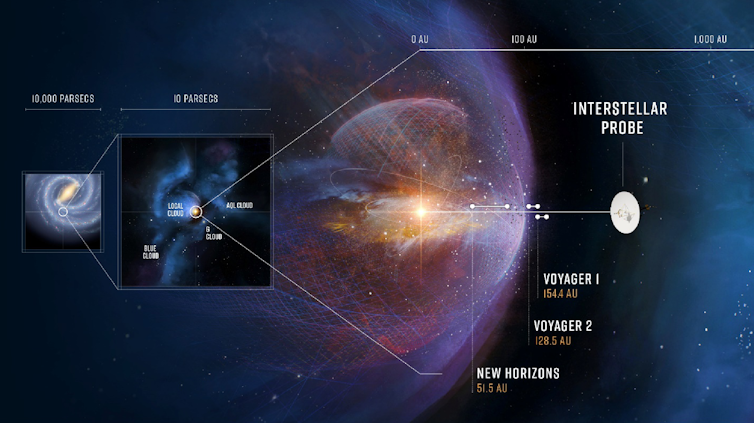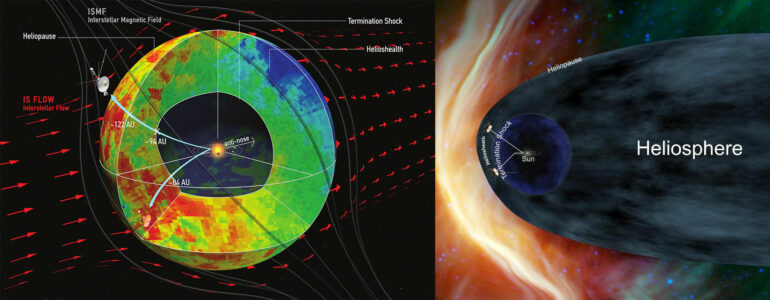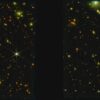The Sun warms the Earth, making it habitable for people and animals. But that’s not all it does, and it affects a much larger area of space. The heliosphere, the area of space influenced by the Sun, is over a hundred times larger than the distance from the Sun to the Earth.
The Sun is a star that constantly emits a steady stream of plasma – highly energized ionized gas – called the solar wind. In addition to the constant solar wind, the Sun also occasionally releases eruptions of plasma called coronal mass ejections, which can contribute to the aurora, and bursts of light and energy, called flares.
The plasma coming off the Sun expands through space, along with the Sun’s magnetic field. Together they form the heliosphere within the surrounding local interstellar medium – the plasma, neutral particles and dust that fill the space between stars and their respective astrospheres. Heliophysicists like me want to understand the heliosphere and how it interacts with the interstellar medium.
The eight known planets in the solar system, the asteroid belt between Mars and Jupiter, and the Kuiper Belt – the band of celestial objects beyond Neptune that includes the planetoid Pluto – all reside within the heliosphere. The heliosphere is so large that objects in the Kuiper Belt orbit closer to the Sun than to the closest boundary of the heliosphere.

An artist’s depiction of the heliosphere and its place in the local interstellar medium and in the Milky Way galaxy. An interstellar probe could travel farther than any previous spacecraft and help scientists get a good look at our heliosphere – the Sun’s influence in space – from the outside.
JHU/APL
Heliosphere protection
As distant stars explode, they expel large amounts of radiation into interstellar space in the form of highly energized particles known as cosmic rays. These cosmic rays can be dangerous for living organisms and can damage electronic devices and spacecraft.
Earth’s atmosphere protects life on the planet from the effects of cosmic radiation, but, even before that, the heliosphere itself acts as a cosmic shield from most interstellar radiation.
In addition to cosmic radiation, neutral particles and dust stream steadily into the heliosphere from the local interstellar medium. These particles can affect the space around Earth and may even alter how the solar wind reaches the Earth.
Supernovae and the interstellar medium may have also influenced the origins of life and the evolution of humans on Earth. Some researchers predict that millions of years ago, the heliosphere came into contact with a cold, dense particle cloud in the interstellar medium that caused the heliosphere to shrink, exposing the Earth to the local interstellar medium.
An unknown shape
But scientists don’t really know what the heliosphere’s shape is. Models range in shape from spherical to cometlike to croissant-shaped. These predictions…



